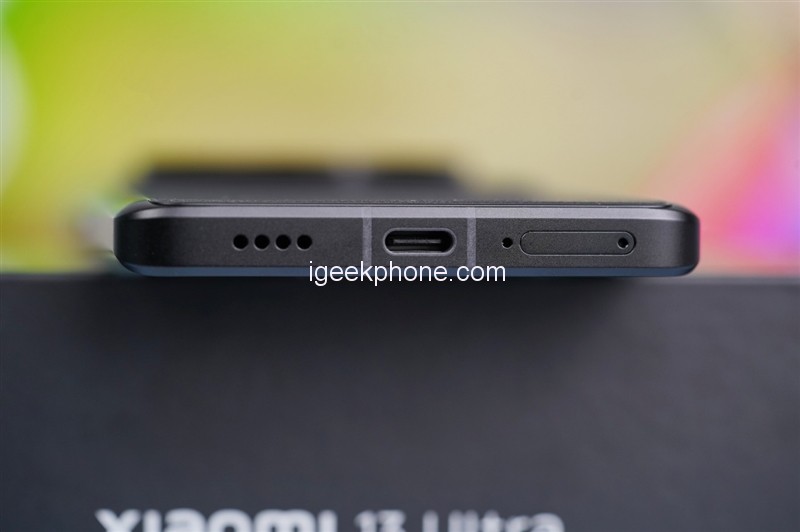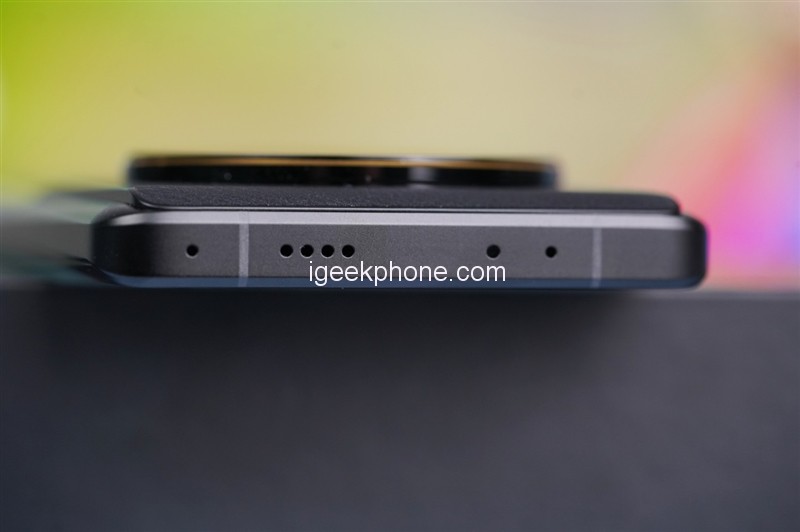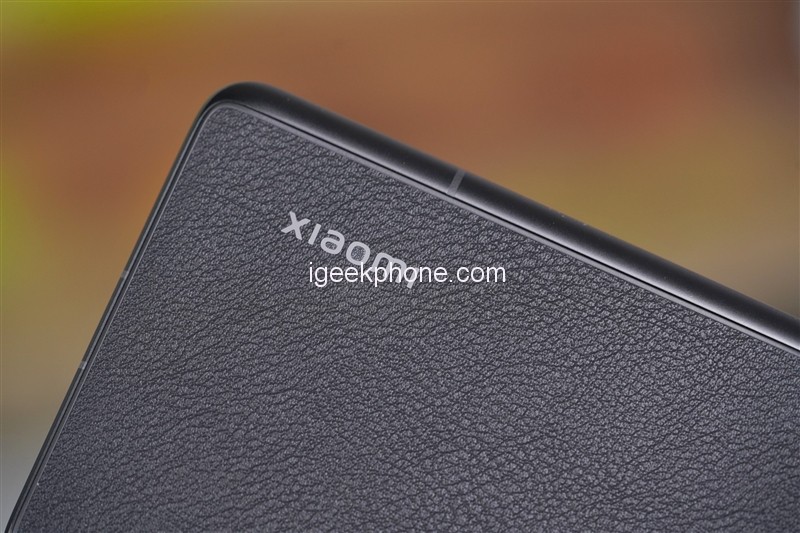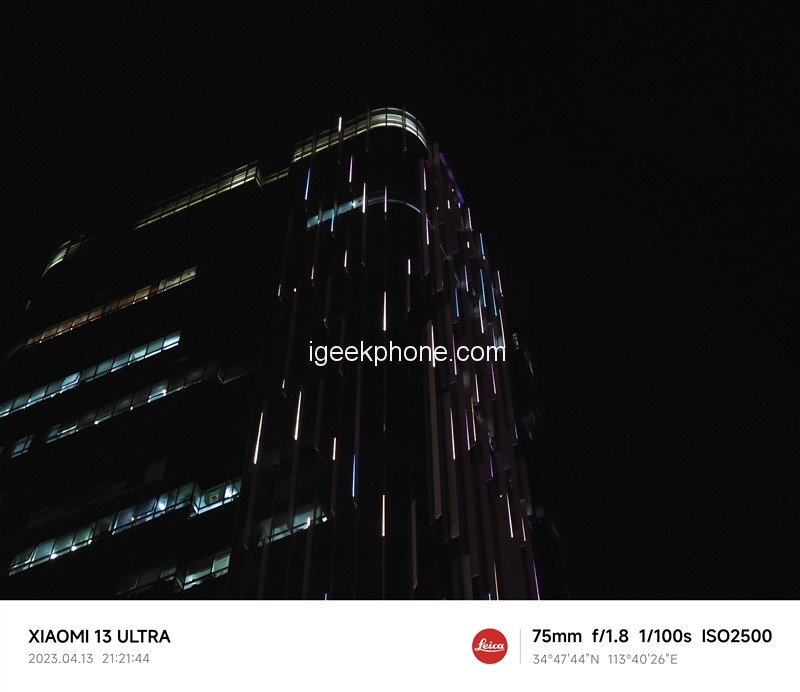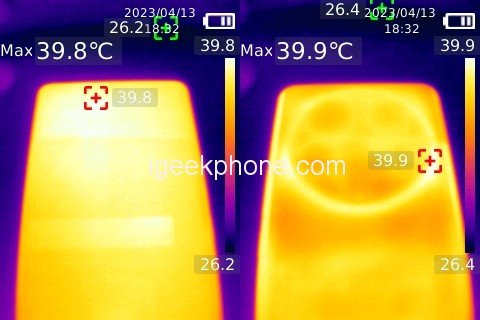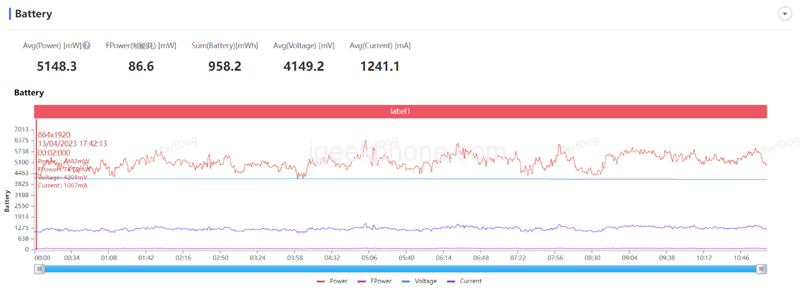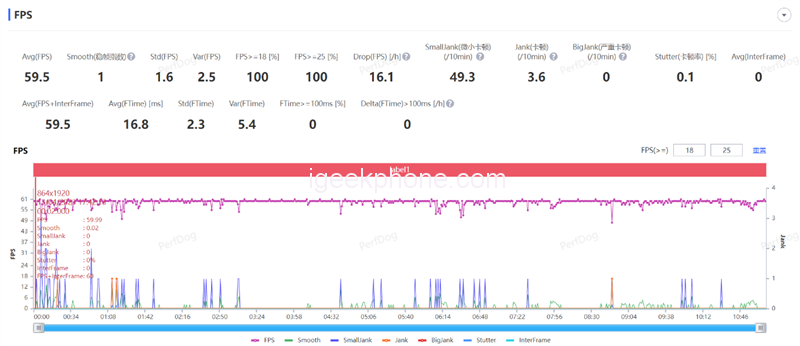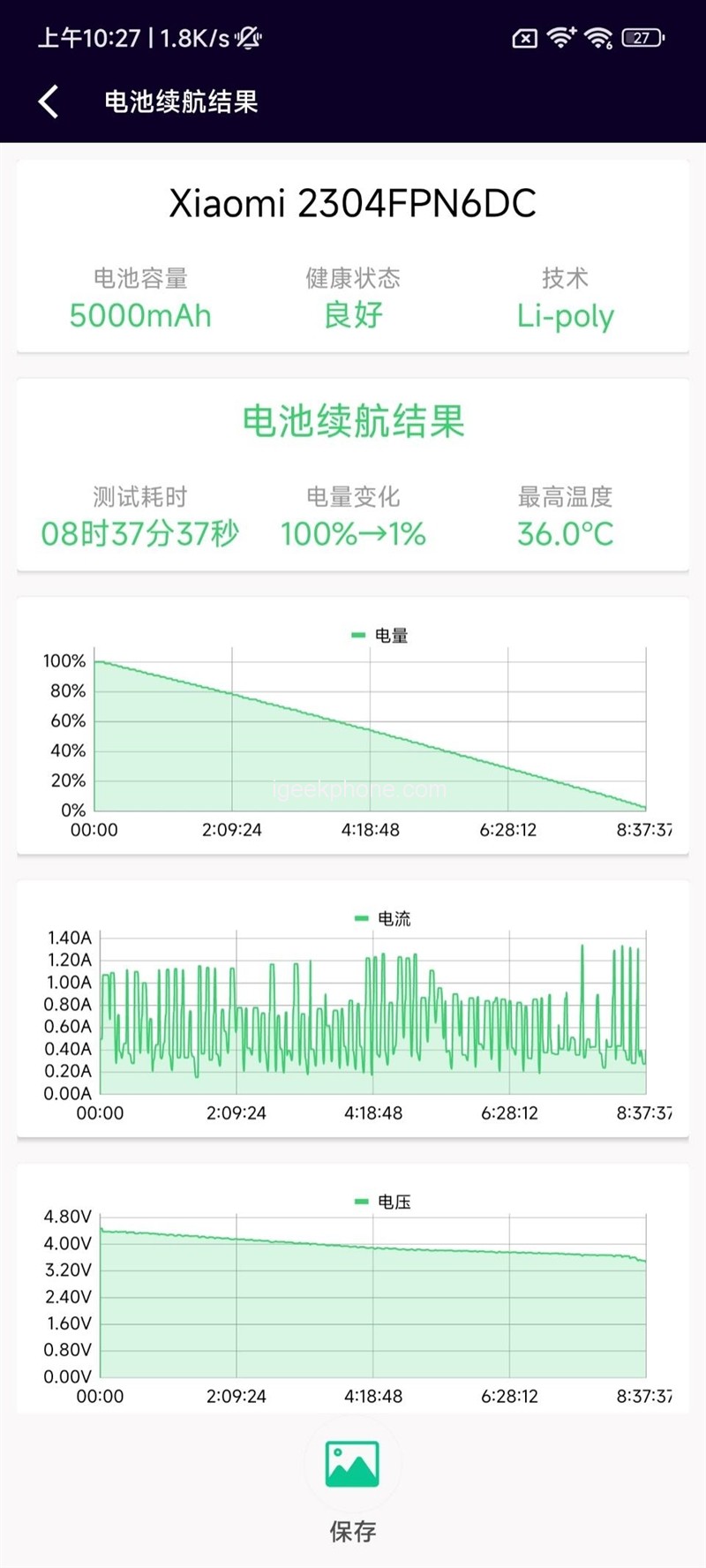The Xiaomi CC series initially undertook Xiaomi’s flagship imaging. In 2019, it launched the first full-focus five-camera mobile phone, Xiaomi CC9 Pro, which debuted with 100-megapixel CMOS and two telephoto cameras; in 2022, Xiaomi Mi 12S Ultra launched the super 1-inch Sony IMX989 and, for the first time, joined hands with Leica, equipped with Leica optical lenses, and launched Leica native dual image quality and Leica filters. It is no exaggeration to say that it is equivalent to a Professional camera built into mobile phones. This year’s Mi Noodle Festival has just passed, and Xiaomi’s fourth Ultra model, Mi 13 Ultra, was grandly released, introducing a variable physical aperture structure, and once again joined hands with Leica to add a custom photography style, allowing customized images Can be flexible.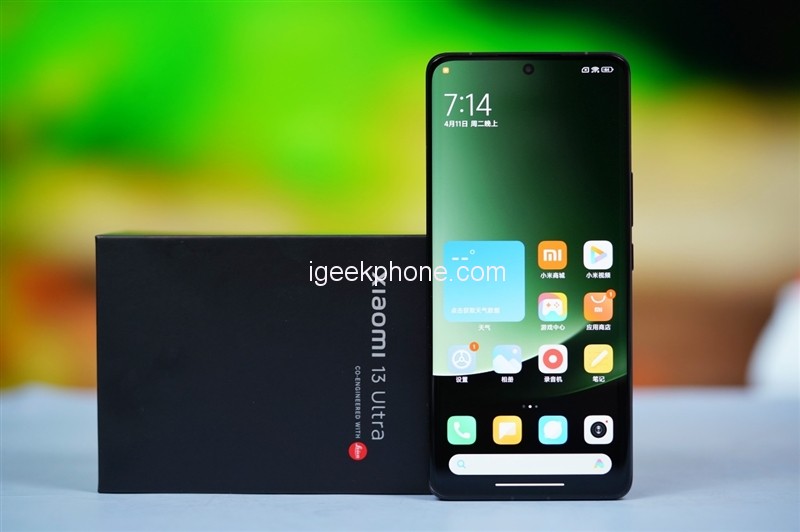
This time, Xiaomi Mi 13 Ultra made a significant breakthrough in imaging and introduced the latest achievement of Xiaomi’s self-developed chip- the surging P2 fast charging chip. This chip enables the single-cell Mi 13 Ultra to support 90W high power Fast charge capability.
The highest storage is 16GB+1TB, and the mobile phone with the largest repository in the history of Xiaomi. The new C7 luminescent material, jointly customized with China Star Optoelectronics, combined with the 2K LTPO ultra-color accurate screen, surpasses the latest Samsung E6 substrate in various performances.
1. The physical variable aperture opens up a new era of moving images
For the first time, the primary camera of Mi 13 Ultra is equipped with a physical aperture structure, which can be switched between f/1.9 and f/4.0 through the adjustment of the blades, and the small aperture of f/1.9 is also the best that can be achieved in 1-inch CMOS Aperture value for performance.
A large aperture has a higher shutter speed and a shallower depth of field, which is suitable for taking samples of macro scenes, while a small gap has a lower amount of incoming light, which is more suitable for shooting night scenes, landscapes, buildings, and some special effects such as starbursts and light spots.
2. The four-camera coverage of the entire focal length covers the first three new Sony CMOS
Mi 13 Ultra inherits the 1-inch outsole primary camera in Mi 12S Ultra and abandons the Sony IMX586 sub-camera that has been used for two generations. The focal length portrait lens uses the super wide-angle and periscope telephoto lens.
Full-pixel omnidirectional focusing technology, the same DOL-HDR technology as IMX989, is known as the golden partner of Sony IMX989.
3. Cooperate with China Star Optoelectronics Co., Ltd. to create 2K ultra-color accurate screen quality surpassing Samsung E6
Mi 13 Ultra uses a professional 2K screen jointly built with China Star Optoelectronics, a new C7 luminescent material, and an improved CPL layer on the screen surface. The viewing angle even surpasses that of the Samsung E6.
The new luminescent material has improved the hole transport layer of the screen, making it more efficient in luminescence. The global brightness has reached 1300nit, and the peak brightness has reached an astonishing 2600nit, far exceeding Samsung E6.
In Mi 13 Ultra, the latest CIE2015 color space standard is introduced for correction, and the screen has better metamerism performance. After modification, the screen’s average color deviation value Delta E reaches about 0.4. The brand-new surging P2 fast charging chip single-core charging power can reach 90W
The charging chip of the Mi 13 Ultra has been upgraded again. The brand-new Surging P2 allows the charging power of a single-cell battery to reach 90W. Together with the Surging G1 battery management chip, it forms the Xiaomi Surging dual-core power system, which can monitor the battery’s health and realize the Optimization of battery charge and discharge.
Screen & Appearance
The packaging of Mi 13 Ultra is very grand, and it contains a complete set of photography kits, including a dedicated mobile phone photography protective case, camera handle, lens cap, and a 67mm filter adapter ring.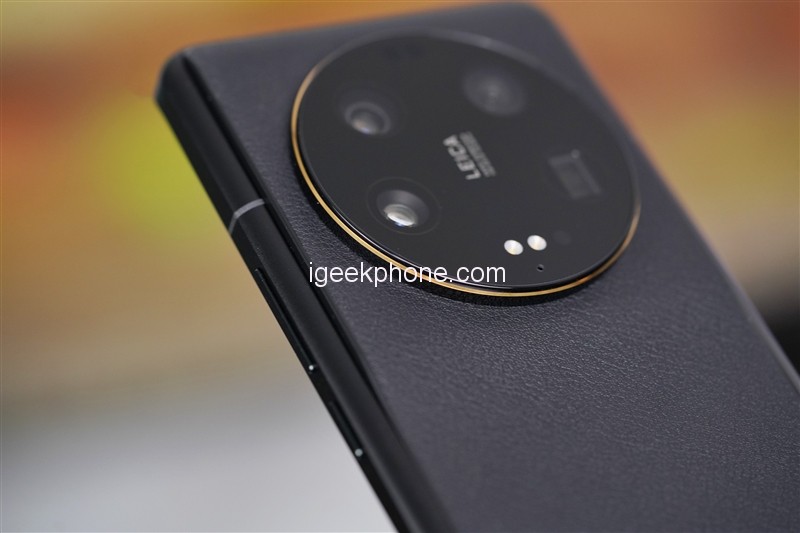
The front of the Mi 13 Ultra uses a 6.7-inch screen. Xiaomi and China Star Optoelectronics jointly develop this screen. The new C7 light-emitting system can achieve a local excitation brightness of 2600 nit and a global brightness of 1300 nit, far exceeding Samsung’s E6 material.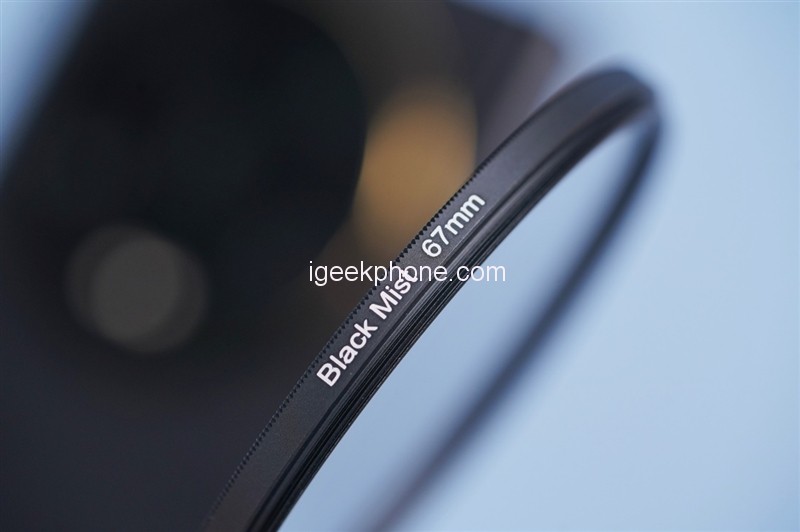
Secondly, due to the joint research and development of Xiaomi and China Star Optoelectronics, they have jointly improved the CPL layer on the screen’s surface and optimized the color cast at large angles. When our viewing angle exceeds 30 degrees, the displayed color will be purer when viewing movies on a horizontal screen. Simultaneously, the proportion of harmful blue light on this screen is reduced by 54% compared with the Samsung E6 substrate.
Of course, 2K resolution and LTPO adaptive refresh rate are also necessary parameters. The most important thing is that the color gamut of Mi 13 Ultra adopts the color space of the CIE2015 standard, which has better metamerism performance. Color depth, the transition of color blocks is smoother.
There are four cameras on the back of the Mi 13 Ultra; that is to say, this time, a lens module with a medium and long focal length has finally been added. Above the four cameras is the laser focusing module, in the middle, is the horizontal Leica logo, and below are two single-color temperature LED fill lights. A light sensor is on the right side of the flash, and below is a noise-canceling microphone.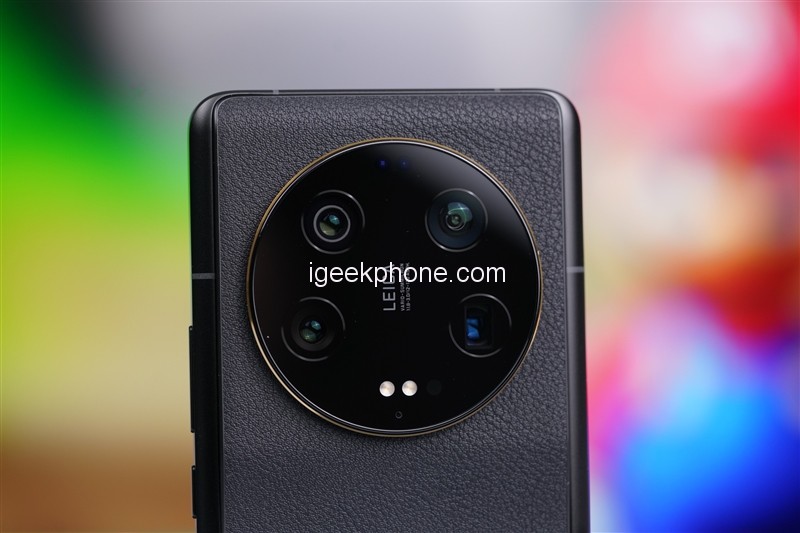
Look carefully around the lens module of Mi 13 Ultra; a metal ring surrounds it. The back of the phone adopts second-generation nano-skin technology. Its performance and touch have surpassed the leather material used on most cameras. It is skin-friendly and soft, thus further improving the texture of the phone.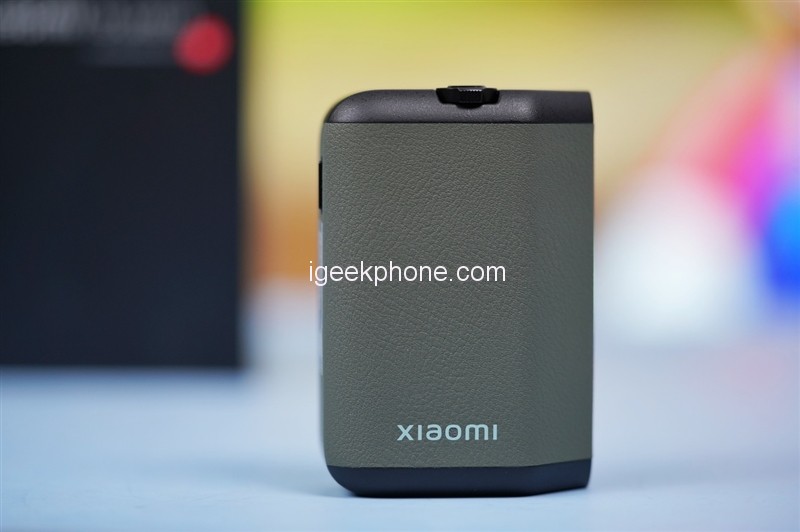
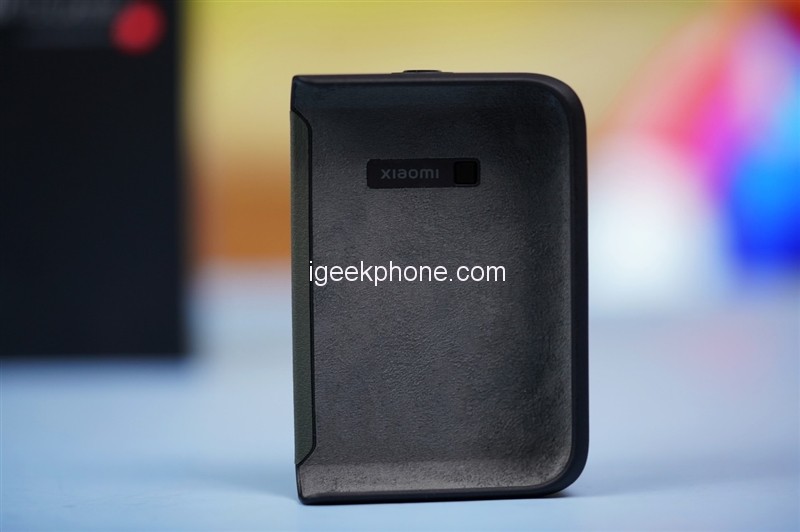
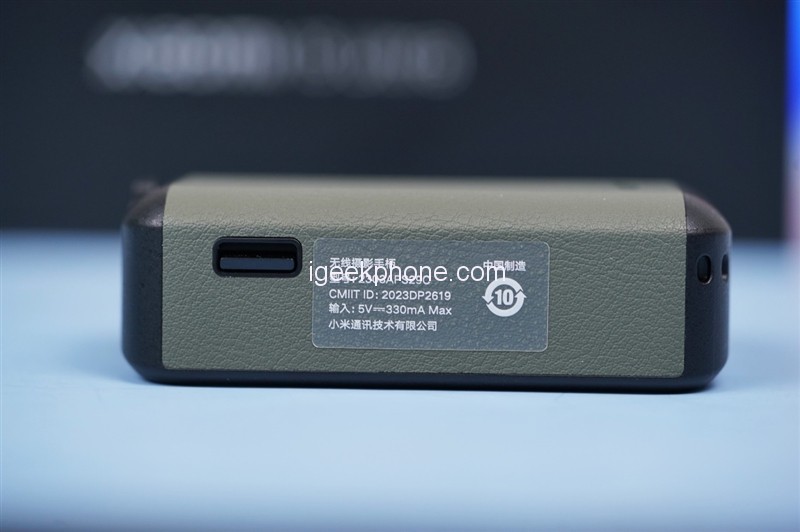
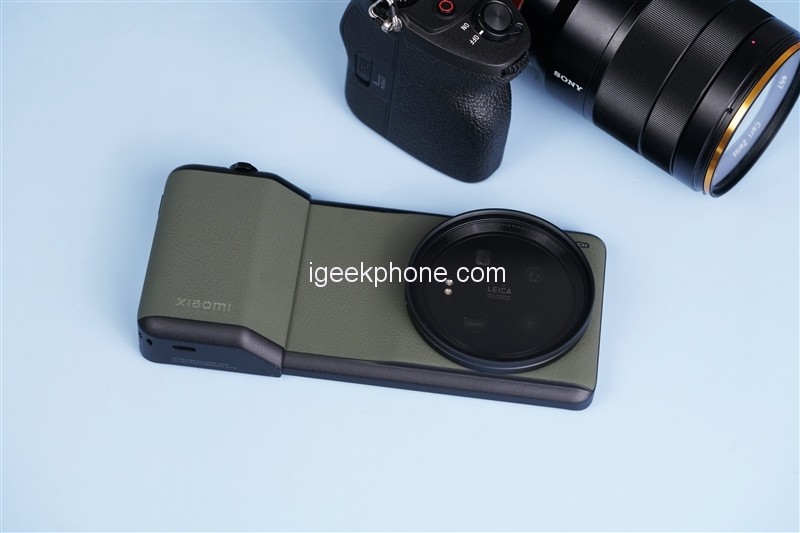
Moreover, this new type of leather material used on mobile phones continues the characteristics of wear resistance, dirt resistance, and yellow resistance, and additional antibacterial agents are added to achieve 99.99% antibacterial ability, even reaching the national first-class antibacterial standard.
Two microphones are used on the top of the phone, and there are speaker openings simultaneously, forming a symmetrical stereo field with the speaker at the bottom. The infrared remote control is also retained. The microphone and SIM card slot are USB 3.2 transmissions on the right side. The attached 67mm filter adapter ring can connect to the mobile phone.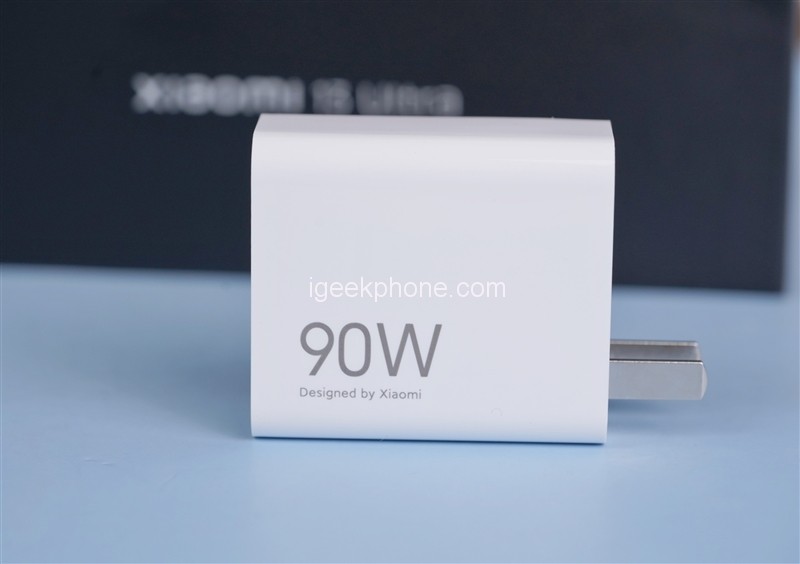
Xiaomi Mi 13 Ultra has a camera handle and a particularly protective case for photography; it can be connected to the phone via Bluetooth. Mi 13 Ultra supports up to 90W wired fast charging and has a 90W power gallium nitride adapter.
Cameras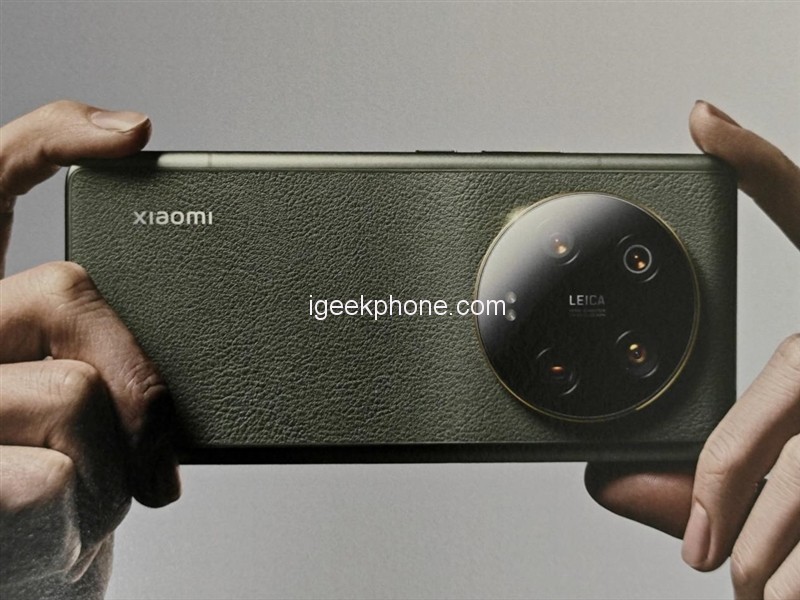
The rear of the Mi 13 Ultra is equipped with a four-camera module with a total focal length. The primary camera is still the largest 1.02-inch ultra-large photosensitive unit used on a mobile phone so far. to focus. Of course, the HyperOIS super optical image stabilization first launched in the Mi 13 series has also been inherited in the Mi 13 Ultra.
The other three are Sony’s latest IMX858 sensors. This sensor has a 1/2.51-inch photosensitive unit, a maximum pixel output of 50MP, and a single pixel of 0.7μm/1.4μm. It also supports full-pixel omnidirectional focusing technology. The new 12-bit ADC has improved the noise problem. Most importantly, this CMOS only supports the high dynamic range of DOL-HDR, realizing the ability to record 4K 60-frame HDR video at the entire focal length.
In addition, to improve the focusing speed and anti-shake performance of the lens, Xiaomi Mi 13 Ultra has introduced a multi-layer lens coating on the lens surface, which can better offset the glare problem from all directions of the outside world, and combined with a new cycloolefin material to make the lens transparent The light rate and low dispersion capabilities have been greatly improved, and the effect of optical purple fringing has also been eliminated, resulting in more efficient focusing and more sensitive anti-shake capabilities.
This time, Xiaomi introduced a large aperture in the series. Among the four lenses, the aperture value of the three lenses exceeds f/2.0 (12mm, 23mm, 75mm). Barrel distortion is often a common distortion form of ultra-wide-angle cameras. Of course, this is also a normal optical phenomenon. The picture will show a convex effect to capture a larger viewing angle.
Previously, other mobile phone manufacturers used this phenomenon to achieve an ultra-wide-angle lens of 150°, presenting the ultimate fisheye lens form. However, as far as the standard ultra-wide-angle lens is concerned, the correction method of most mobile phones is to crop the pixels at both ends of the screen to flatten the screen visually, but this method will make the proofs lose a certain amount of image quality, so generally in In the settings interface of the mobile phone camera, there will be an option for super wide-angle distortion correction. If not, the mobile phone has corrected it by default.
To eliminate this distortion, Xiaomi Mi 13 Ultra uses a native low-distortion design, redesigns each lens’s optical path and extends the light reaching the camera to a state without distortion. Therefore, in Mi 13 Ultra, the “ultra-wide-angle distortion correction” function has disappeared. Having said so much, we have to show the strength of mobile phone images through actual proofs. In this regard, let’s distinguish the camera performance of Mi 13 Ultra according to the camera.
Leica main camera
In the default mode of the primary camera, Xiaomi Mi 13 Ultra outputs Leica’s classic image quality. It can be felt from the proofs that the color is slightly darker, but without losing the accuracy of the color, there is a strong “German flavor.
Leica Vivid
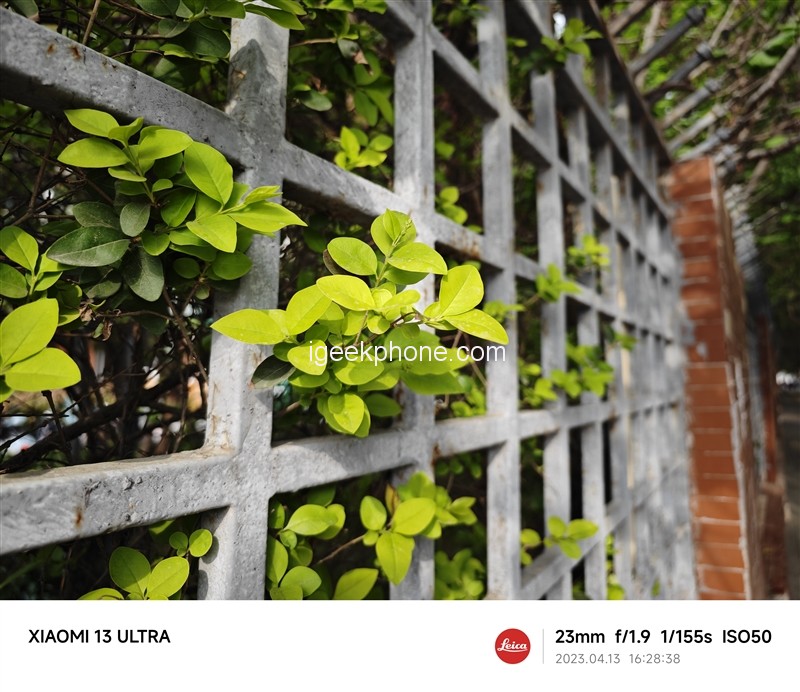
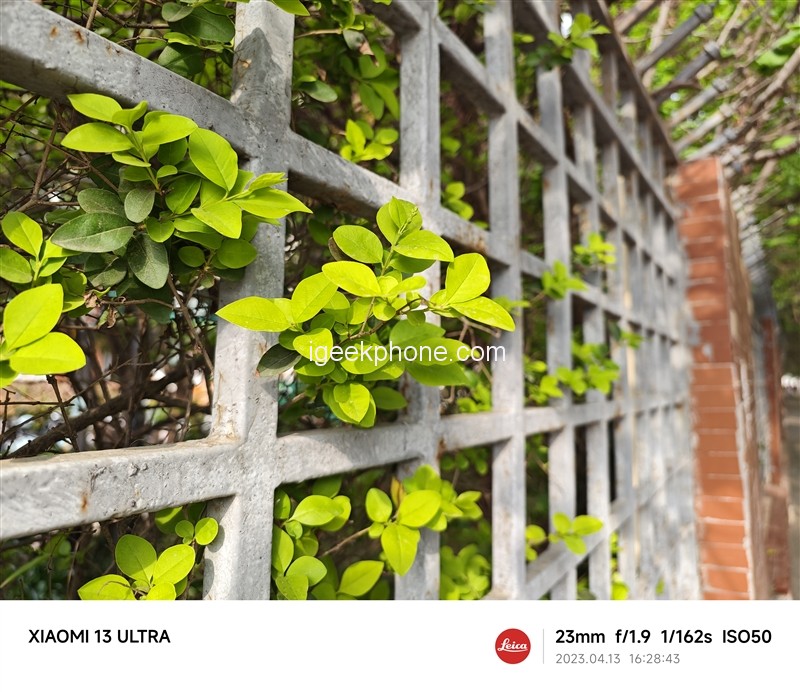
By comparing the two kinds of Leica image quality, we can feel that the picture taken with Leica’s classic image quality has low saturation, well-proportioned light and dark, and a strong German flavor, giving people a particularly advanced feeling.
The pictures taken by Leica Vivid have a high saturation, which is more suitable for shooting flowers and plants, and the colors have sufficient rendering power.
Two stops of aperture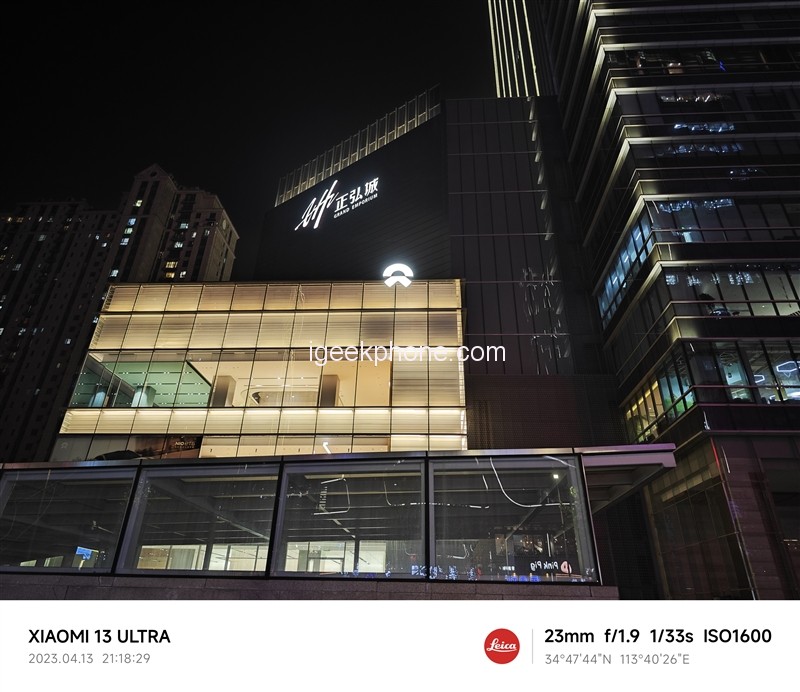
Under the large aperture of f/1.9, the picture’s field effect depth is more substantial. The iron railings behind the leaves will be somewhat blurred, and the rust can be faintly visible while the leaves are particularly prominent. Using this extensive aperture shooting can highlight the main body of the picture; You don’t need shooting skills to take photos with texture.
Under the small aperture of f/4.0, the effect of depth of field is weak; not only the branches and leaves around the leaves can be seen clearly, but also the rust stains of the iron railing behind can be seen in a small aperture it is more suitable for shooting Scenes such as distant scenery, night scenes, and buildings.
The 1.02-inch Sony IMX989 outsole primary camera makes the phone have a very high tolerance in relatively dark conditions, and with the large aperture of f/1.9, it has excellent color reproduction ability for such bright lights, and there is almost no noise in the dark part of the sky, and the pictures taken under low light look very transparent.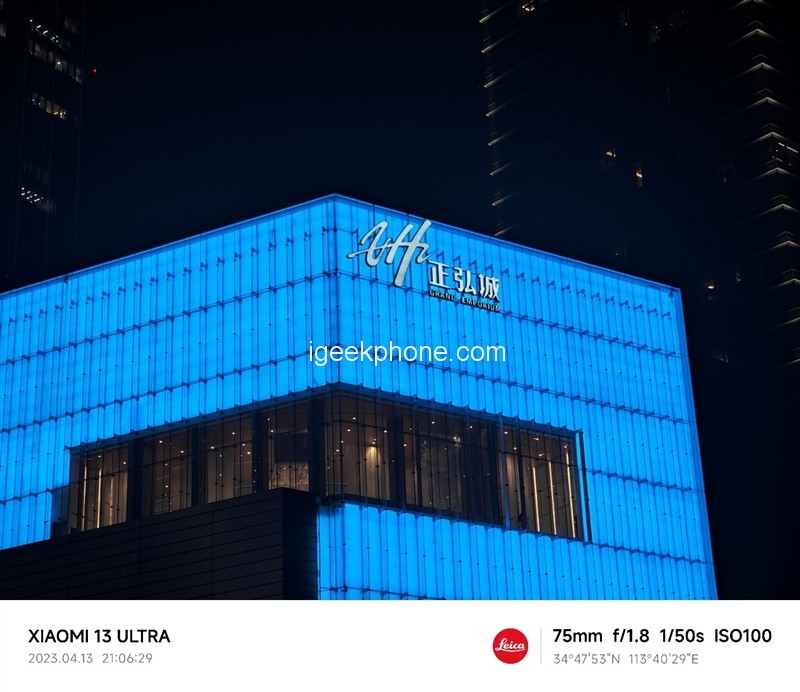
In addition, thanks to the multi-layer lens coating and the blessing of new cycloolefin materials, it can control the glare of direct light very well. We have taken many night scene samples, most of which are taken against natural sunlight, and the picture still looks very bright. There are no optical defects such as astigmatism and glare.
This 3.2x portrait lens, in the actual test, can be called by zooming in on the camera interface to 2.6x. This medium-telephoto camera has an excellent ability to shoot relatively close objects or portraits.
Regarding night scenes, this 3.2x telephoto camera has a high image color display and filming rate. For the author, the image at the medium focal length is still better than the 5X periscope telephoto.
Leica Super Telephoto Lens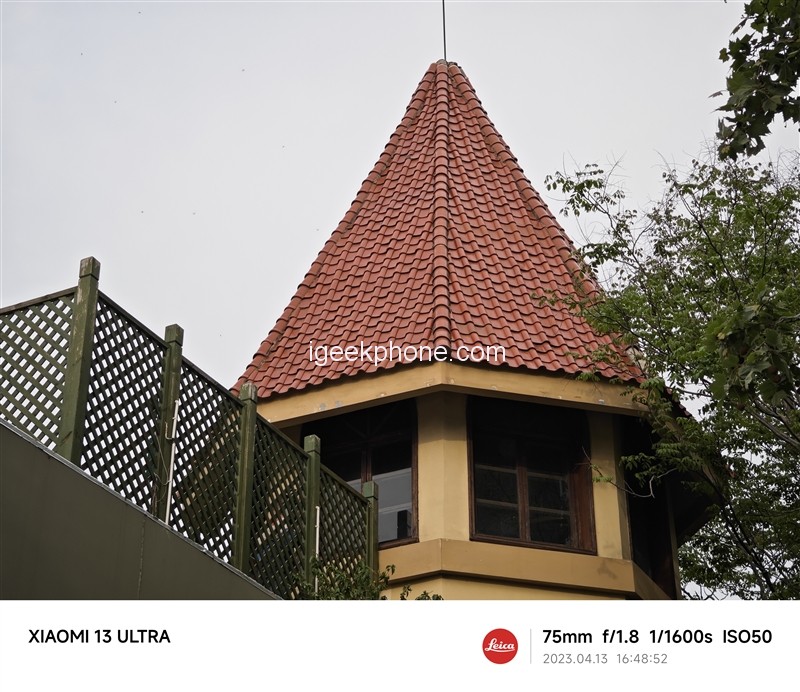
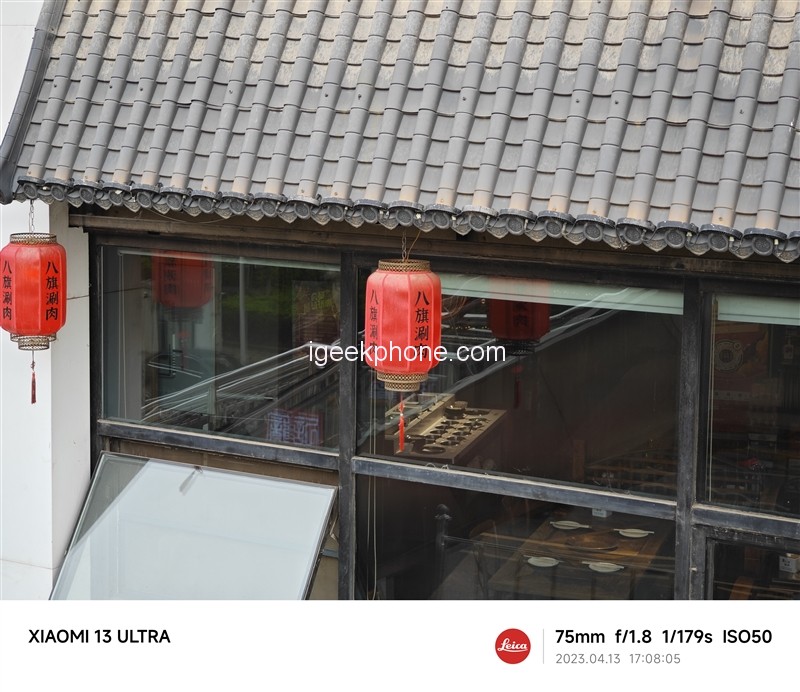
The imaging style of the 5x periscope telephoto camera is almost the same as that of the medium telephoto camera. When the screen is enlarged ten times, it can output near-lossless picture quality and excellent resolution maintaining nearly the same latitude as the primary camera. , bringing the color expression of what you see is what you get.
In the night scene, the proofs taken by the 5x periscope telephoto camera look transparent and bright, and the color reproduction is close to the actual location.
Leica super wide-angle lens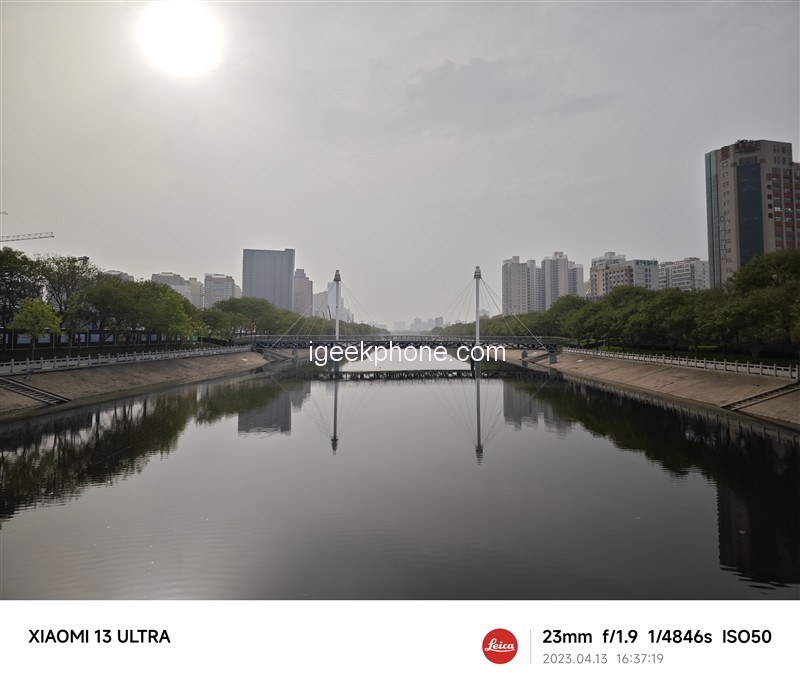
The ultra-wide-angle camera has a perfect white balance adjustment in daytime scenes, which is not far behind the two telephoto lenses, and its anti-distortion ability is powerful. There is indeed no outwardly convex barrel at both ends of the screen. Image, and still retains a vast field of view.
The only regret is that the leaves near the edge of the image still appear slightly purple. In the night scene, the image optical properties of the ultra-wide-angle lens are at the same height as the primary camera, and the black sky is exceptionally pure, and it has a perfect light suppression effect in the face of direct light. You can even imagine if you don’t look at the equivalent focal length. It can’t be seen that this is a picture taken with an ultra-wide-angle lens.
Performance
Xiaomi Mi 13 Ultra adopts the second-generation Snapdragon 8 mobile platform and has LPDDR5X+UFS4.0 flash memory as standard. The version we got is 16GB+512GB of storage. Next, we will conduct a set of theoretical benchmark tests.
During the test, we turned on the performance mode and ran the score in an environment with a room temperature of 25 degrees Celsius to ensure the test’s objectivity.
1. Antutu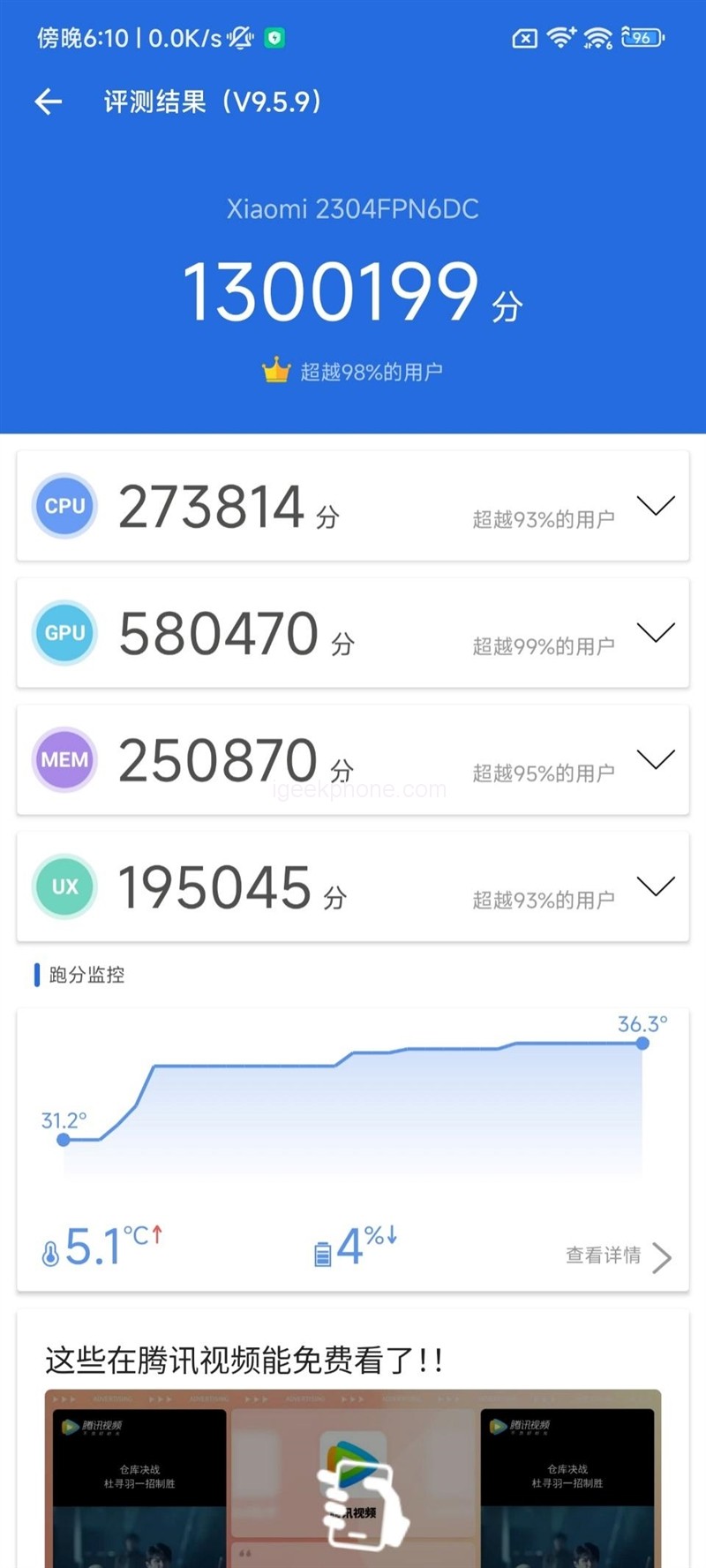
In the AnTuTu comprehensive test, the total score broke through 1.3 million points, reaching 1300199 points. Compared with last year’s Xiaomi Mi 12S Ultra, equipped with Snapdragon 8+, it has an improvement of nearly 21.2%. Among them, the CPU score is 273,800 points, leading the Snapdragon 8+ is about 13.5%, and the GPU score is 580,400 points, 24% ahead of the same period last year. Overall, it will have a more robust performance regarding graphics capabilities.
In terms of memory, the score of 250,800+ has a performance improvement of nearly 34.6% compared with the previous generation.
2. GeekBench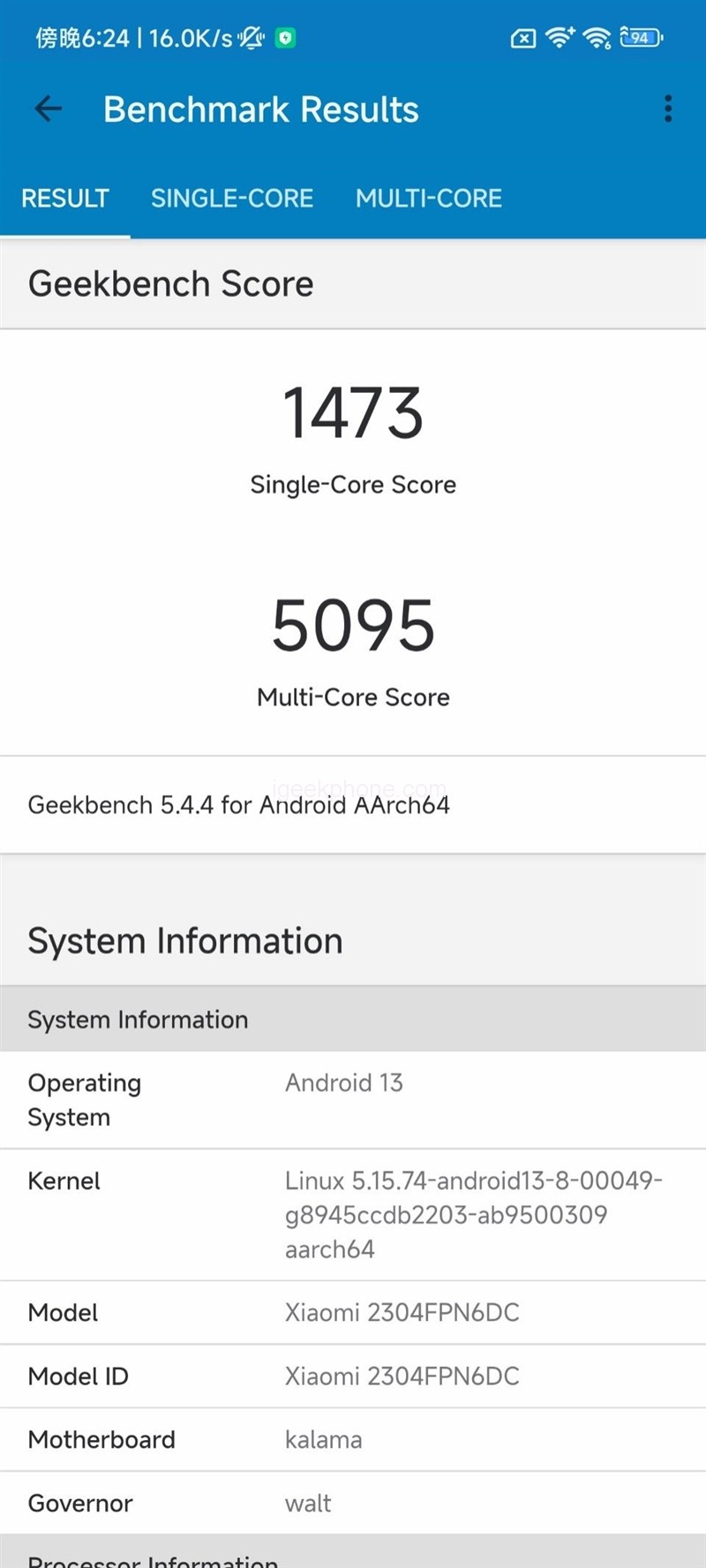
In the single CPU test, using GeekBench5, the results of single-core 1473 and multi-core 5095 are achieved, which are about 10.67% and 22.1% ahead of Mi 12S Ultra, respectively. Due to the introduction of Cortex-X3 and Cortex-A715 cores, multi-core performance There are also certain advantages.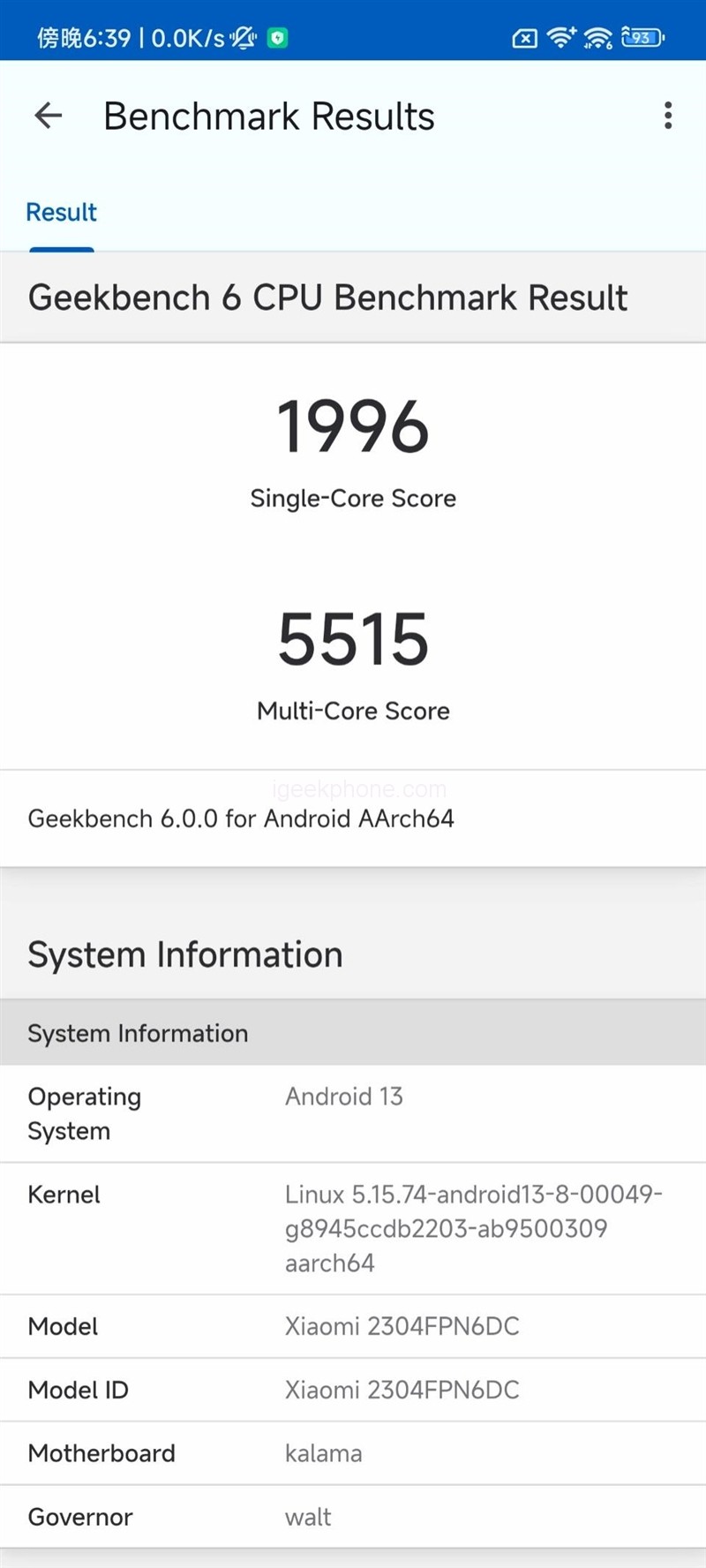
We also used GeenBenck6 to test, with a single-core score of 1996 and a multi-core score of 5515, in the first echelon among the second-generation Snapdragon 8 phones.
3. Androbench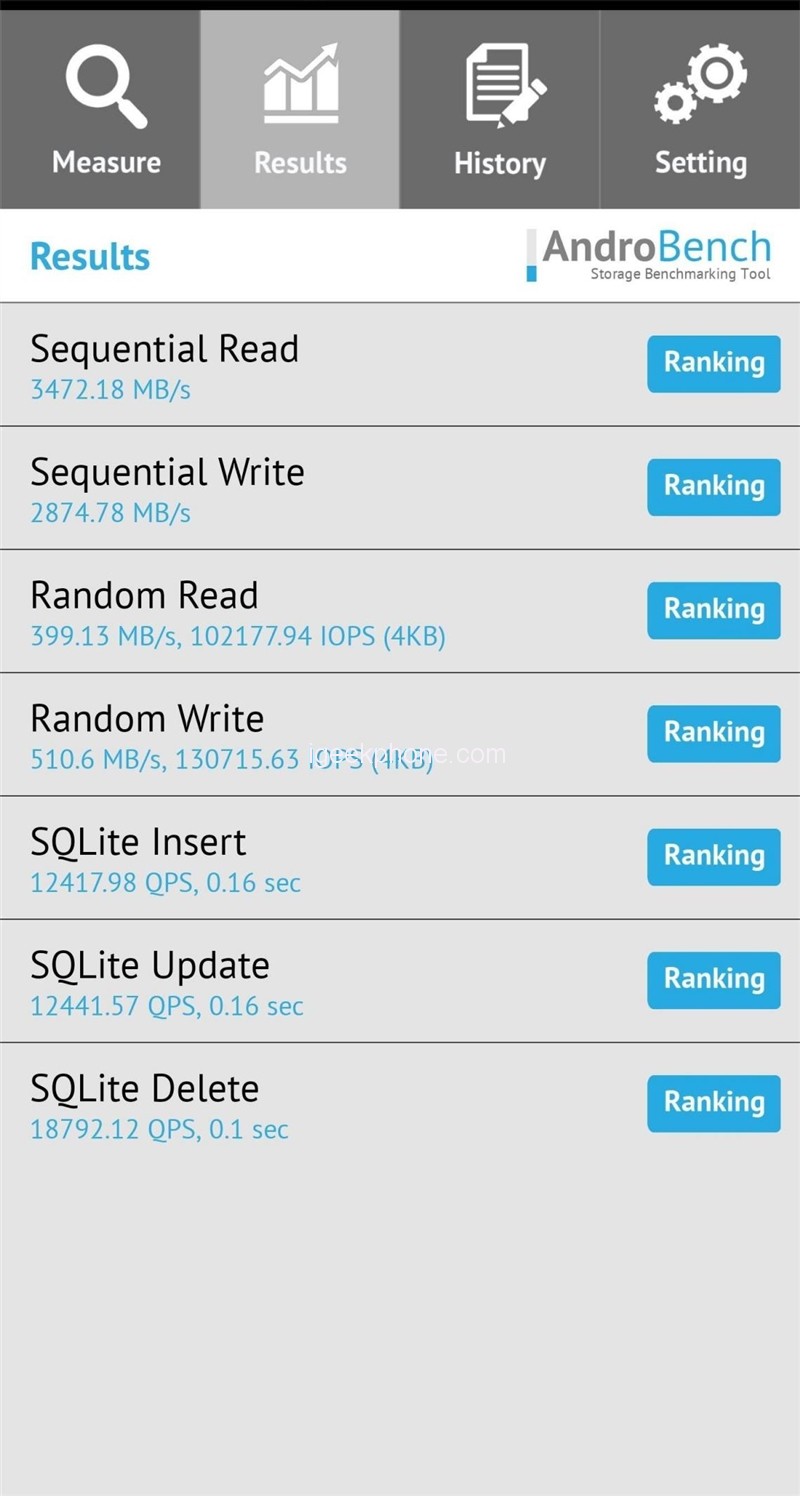
In the Androbench flash memory test, the sequential read speed of the Xiaomi Mi 13 Ultra can reach 3472MB/s, and the sequential write speed can get 2874MB/s.
Regarding random read and write, they have speeds of 399MB/s and 510MB/s, respectively, which meet the flash memory standard of UFS 4.0 specification.
4. Memory test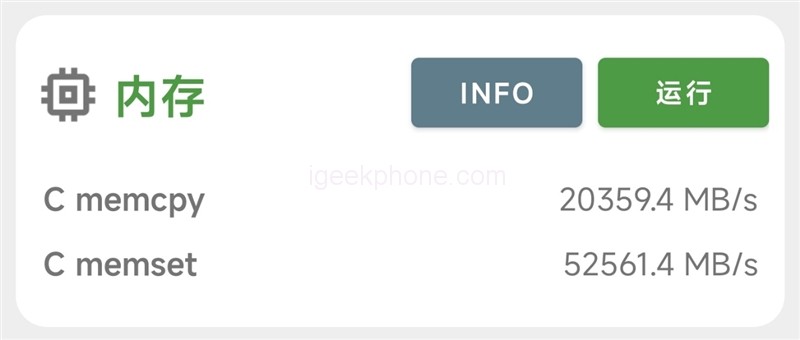
LPDDR5X 4200MHz memory has a theoretical copy speed of 20.3GB/s and a theoretical write speed of 52.5GB/s, 32% and 58.4%, respectively, compared to LPDDR5 3200MHz memory.
Gaming Performance
In the game testing session, we selected two representative mobile games that can reflect the actual performance of mobile phones under medium and high loads in an office environment with an indoor temperature of 26 degrees Celsius, namely “Peace Elite” and “Original Game.” God”.
During the test, we adjusted the screen’s brightness to 50% and turned off the automatic brightness to ensure the accuracy of the test. We used the highest image quality + highest frame rate for testing in the game and recorded the frame rate and temperature in the game and power consumption performance.
1. Peace Elite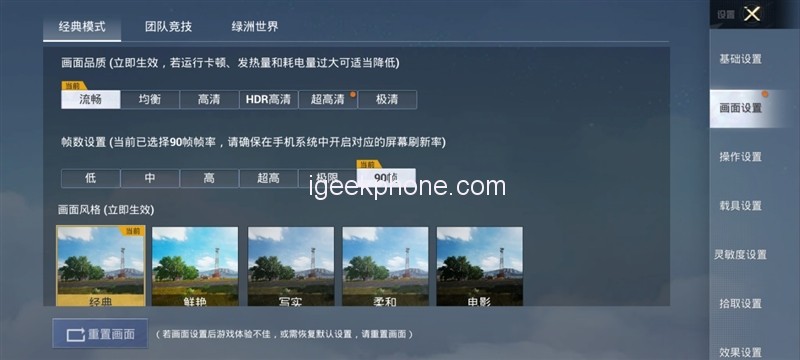
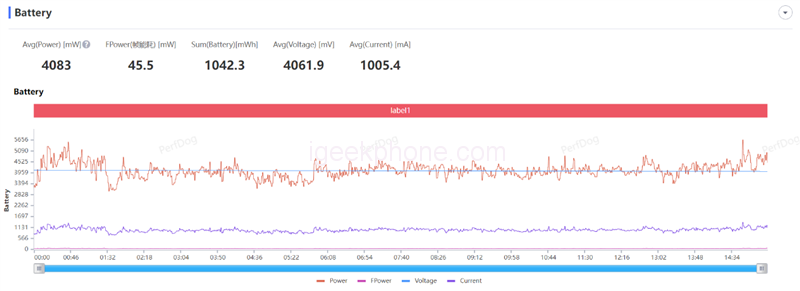
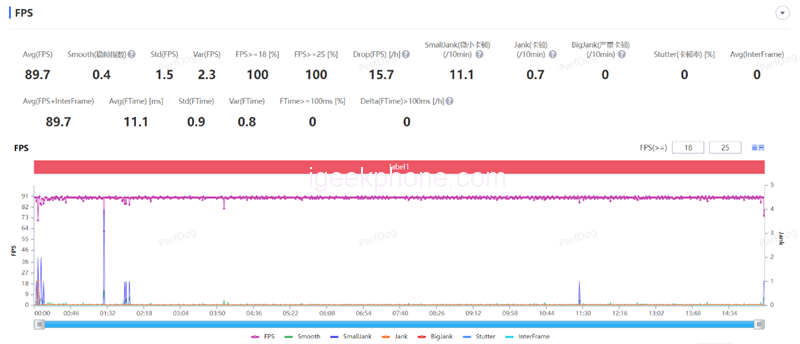
The Peace Elite mobile game can run at least 90 frames when the smooth picture quality is turned on. After a team battle test of nearly 15 minutes, the average frame rate was maintained at 89.7 FPS, with an average fluctuation of 1.5 FPS. The overall situation can be stabilized in a straight line. The game process is very stable.
The average power consumption is 4.083W, and the frame energy consumption is 45.5mW, which is also the intermediate level for Snapdragon 8Gen2.
The highest temperature on the front of the fuselage is 39.8 degrees Celsius, and the back of the fuselage is 39.9 degrees Celsius. During the game, you will feel that the phone frame will be a little hot, but it is undesirable.
2. Original God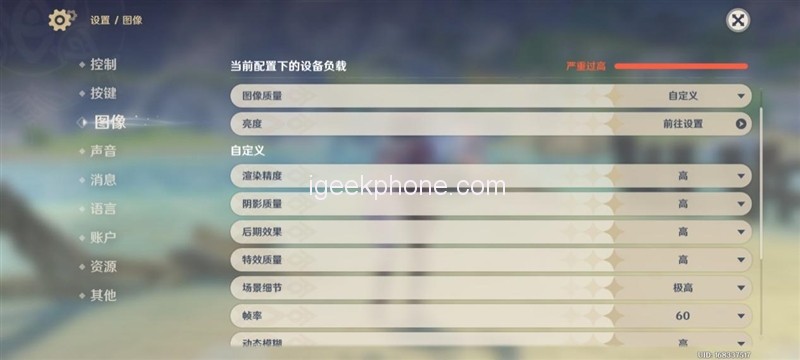

In the high-load Yuanshen mobile game, we opened the highest quality +60FPS and ran the map while fighting monsters. After about 10 minutes of testing, there was a slight frame drop during the game, but we also tested the game. The resolution, the picture quality of 864×1920, is much higher than most Snapdragon 8Gen2 mobile phones, so it will also cause a certain rendering pressure on the mobile phone.
Therefore, it is reasonable to experience a slight freeze during the game. The final average frame rate was maintained at 59.5FPS, which is very good when it is close to the entire frame.
In terms of power consumption, the average power consumption has reached 5.148W, which is more vital than other Snapdragon 8Gen2 phones. The phones we tested in the past generally maintained around 5.5W or even close to 6W. The Xiaomi Mi 13 Ultra, The Optimization of the original god, seems to be in place in one step.
Regarding temperature, with a power consumption of more than 5W, the highest temperature on the front of the fuselage is only 40.9 degrees Celsius and 40.5 degrees Celsius on the back. The high-temperature area is mainly concentrated in the camera area.
The annular cooling pump heat dissipation technology of Mi 13 Ultra has played a perfect role. This method of gas-liquid separation can quickly conduct heat to the surroundings of the fuselage, avoiding excessive temperature at the same position, so holding it with both hands. Having a mobile phone for a long time for high-definition mobile games will not feel hot.
Battery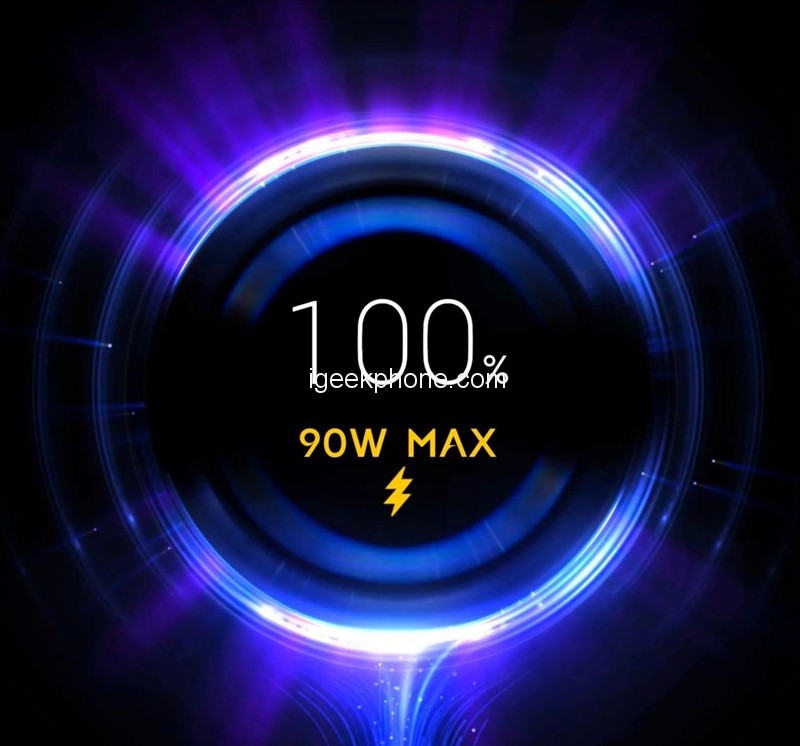
Xiaomi Mi 13 Ultra has built-in the latest surging P2 fast charging chip, which enables the single-cell battery to support 90W wired fast charging power and also supports 50W Pro wireless fast charging and 10W wireless reverse charging.
Combined with the surging G1 battery management chip, Mi 13 Ultra can monitor the battery’s health status and maintain the health status of the battery by optimizing the discharge and charging strategy.
In this regard, we also tested the charging and battery life of the Mi 13 Ultra.
Before charging, we first turn on the fast charging acceleration function in the mobile phone manager, and the words “90W MAX” will be displayed on the charging interface.
Charging test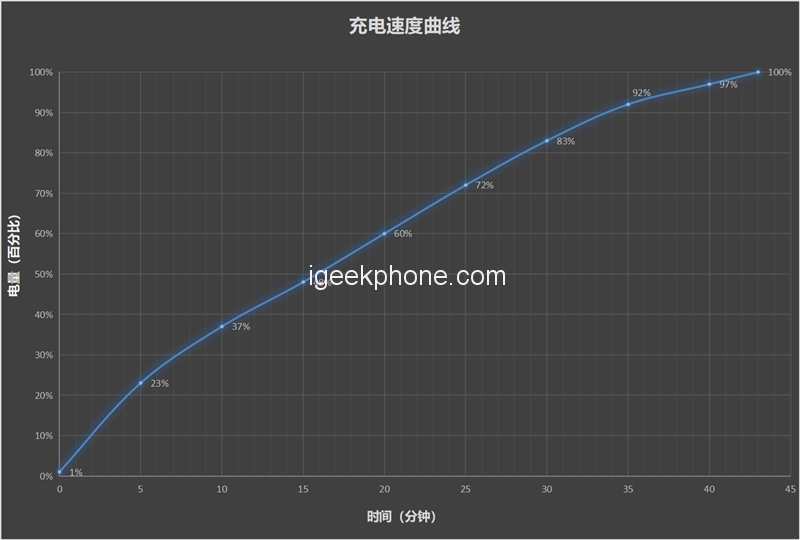 After testing, start charging from 1% to 23% in 5 minutes, charge to 37% in 10 minutes, charge to 60% in 20 minutes, charge 83% in half an hour, and it takes 43 minutes to charge fully.
After testing, start charging from 1% to 23% in 5 minutes, charge to 37% in 10 minutes, charge to 60% in 20 minutes, charge 83% in half an hour, and it takes 43 minutes to charge fully.
Endurance test
For the battery life, we use a professional battery life test tool – the battery dog produced by Kuai Technology.
In terms of test items, we chose the extreme power battery life test and checked all the test items, including CPU high voltage, CPU multi-threading, AI recognition, picture browsing, video playback, and web browsing to simulate user usage scenarios and restore the whole load to the greatest extent. Infinitely close to the actual power consumption.
We adjusted the phone’s brightness to 50% and tested it with a 2K resolution (3200×1440) and adaptive refresh rate. After the battery dog test, it took 8 hours and 37 hours for the power consumption of Mi 13 Ultra to go from 100% to 1%. Minutes, according to the usage of general users, can provide a whole day of intermittent use. If you want higher battery life, you can adequately reduce the refresh rate and resolution of the screen.
Verdict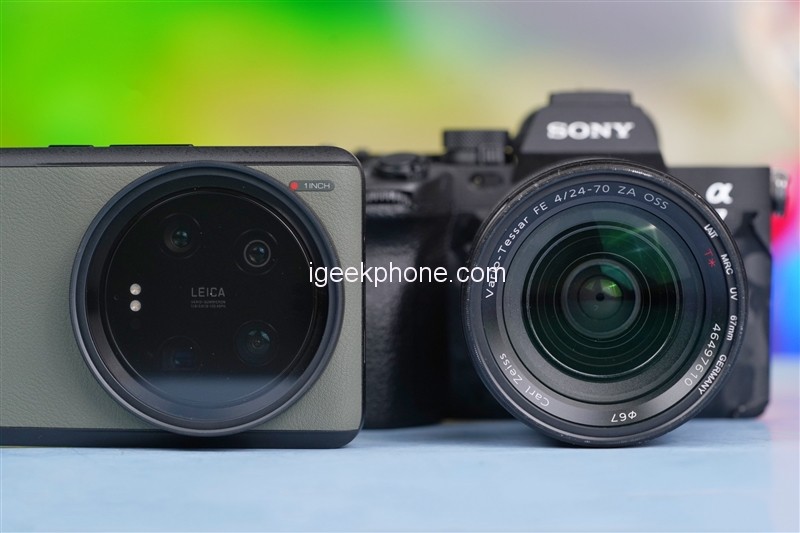
Since Mi 12S Ultra cooperated with Leica for the first time last year, the Mi 13 Ultra flagship machine was launched in less than a year, showing that Xiaomi has deeply integrated the Leica image training experience.
As Xiaomi’s fourth Ultra mobile phone, it re-emerged with a new form of variable physical aperture, outstanding optical lens quality, and second-generation Leica color tuning. It can be seen that Xiaomi is not only relying on the power of Leica but also Looking for a new direction in the imaging hardware system, thus explaining the name of Ultra and laying a solid foundation for Xiaomi’s future high-end imaging road.
1. A new choice for users with a two-speed variable aperture
The 1-inch super outsole primary camera, combined with the best physical aperture of f/1.9, has obtained the most significant amount of light and the most robust resolution in the mobile phone imaging system.
The variable physical aperture of f/4.0 makes the image no longer monotonous, with one more choice and one more possibility, and it also endows this primary camera with super performance that can shoot both long and short shots.
2. The new four-camera debut IMX858 with consistent tone and smooth zoom
The first launch of the new CMOS of IMX858, combined with excellent image tuning, makes its automatic light metering ability and automatic white balance imaging level consistent with the primary camera. The four cameras have almost achieved the same color tone as the actual proofs. And this CMOS also can shoot 4K images, and the zoom is relatively smooth during video recording. The four lenses have achieved a perfect relay, slightly more potent than the Mi 12S Ultra.
3. Self-developed second-generation surging P2 core + G1 core 90W single-core charging speed is fast and safe
Xiaomi has never given up on the field of self-developed cores. It has introduced the latest research and development results in Xiaomi Mi 13 Ultra. The Xiaomi Surging dual-core power system composed of the Surging P2 fast charging chip and the Surging G1 battery management chip allows the mobile phone to operate in ultra-low temperature extreme environments. It can also have fast charging and long-lasting battery life. At the same time, it also realizes the ability of a single cell to carry 90W ultra-high power and ensures the safety of charging.
Based on Leica image tuning, Xiaomi Mi 13 Ultra has created a set of image systems that suits itself by changing the characteristics of various hardware and in-depth Optimization. It is enough to see that Xiaomi is pursuing the “Leica style” while having unique photography skills and insights.
Forecast, Xiaomi is likely to launch its independent imaging brand in the future, so it has been absorbing the imaging training experience brought by Leica. It is also possible that the next generation of imaging flagships can see a joint name independent of any imaging. This cross-generation Ultra flagship machine can stand alone on its own.
Read Also: Xiaomi Pad 6 Pro Review: The Perfect Companion for Work and Play
Do not forget to follow us on our Facebook group and page to keep you always aware of the latest advances, News, Updates, review, and giveaway on smartphones, tablets, gadgets, and more from the technology world of the future.










